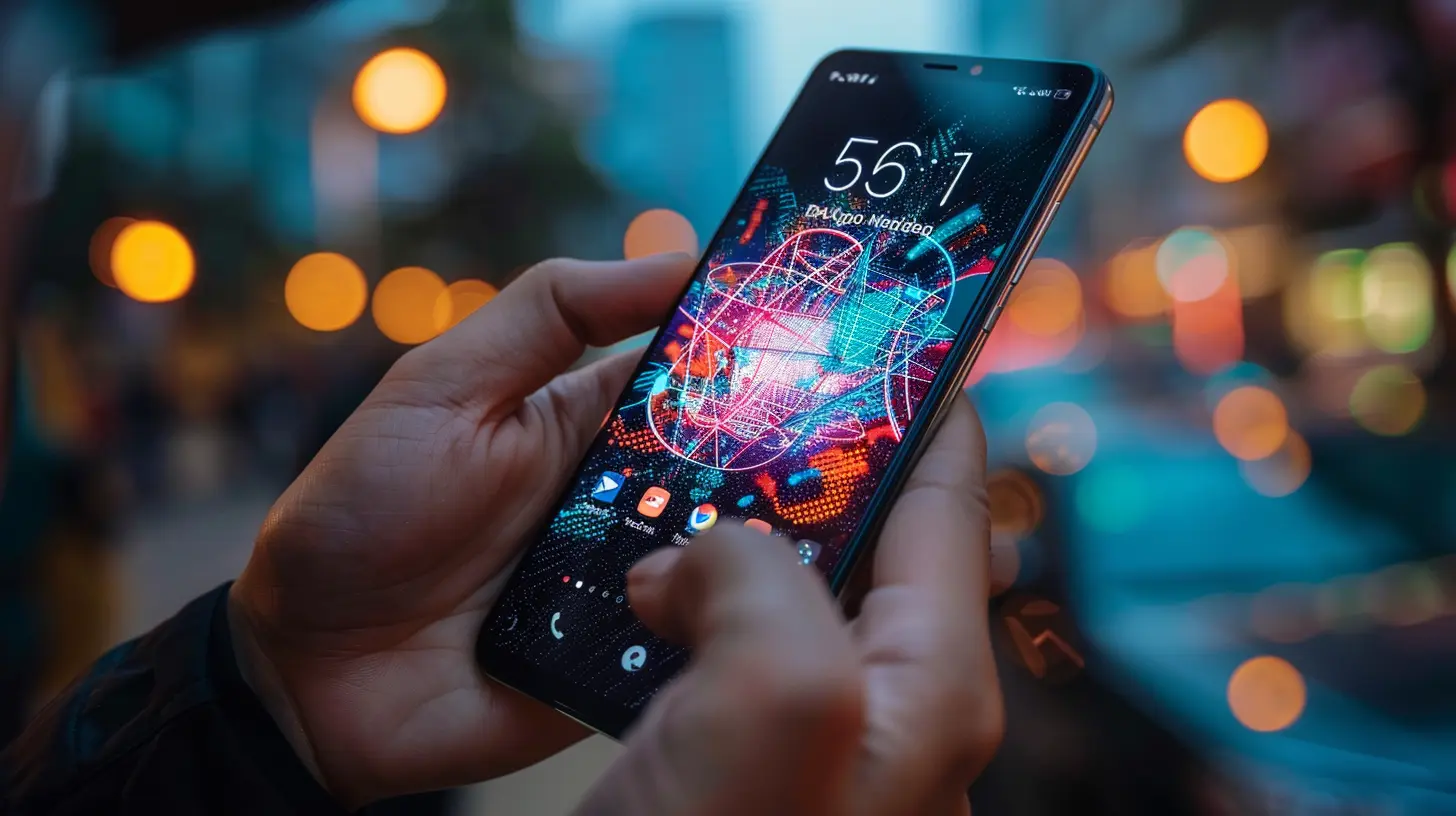Developing Apps for 5G: What Developers Need to Know
23 August 2025
5G is more than just a buzzword—it’s the future knocking on our digital doors. It’s fast, it’s powerful, and yeah, it’s going to change the way we think about mobile apps. Whether you're a rookie developer or a seasoned coder, understanding what 5G brings to the table is not just helpful—it’s essential.
But let’s cut through the hype. What exactly does 5G mean for mobile app development? How will it impact design choices, user experience, and your overall development workflow?
Let’s break it all down.
What Is 5G Really About?
First things first: 5G stands for fifth-generation wireless technology. It promises speeds up to 100x faster than 4G, ultra-low latency, and the ability to connect billions of devices simultaneously. Think near-instant downloads, high-quality video calls, real-time AR experiences, and even remote surgeries. Yeah, it’s that powerful.Here’s a quick breakdown of what makes 5G so exciting:
- Blazing Speed: Supports up to 10 Gbps.
- Low Latency: Less than 1 millisecond delay.
- Greater Bandwidth: Can handle more devices without choking.
- Network Slicing: Allows for customized, use-case-specific networks.
So, if 4G was the highway, 5G is the bullet train.
Why Should App Developers Care?
Because 5G isn’t just a network upgrade—it redefines what mobile apps can do. Picture this: you’re building an app today that loads product catalogs slowly or buffers HD videos. With 5G, that frustration disappears. That means you can dream bigger and build smarter.For developers, this opens up completely new possibilities:
- Real-time multiplayer games without lag.
- AR and VR apps that feel genuinely immersive.
- High-resolution streaming with virtually zero buffering.
- IoT integration for smart homes, cities, and wearables.
- Faster app response and loading times = happier users.
Still thinking your app doesn’t need to care about 5G? Think again.
Key Considerations: How 5G Impacts App Development
Let’s dig into what you, as a developer, should actually be focusing on when developing apps for 5G.1. Leverage Low Latency for Real-Time Apps
Latency is the time it takes for data to travel from source to destination. With 4G, you might experience 50-100 milliseconds of lag. With 5G? We’re talking sub-1ms. Suddenly, real-time becomes truly real-time.💡 What to do:
- Build real-time collaborative tools (think Google Docs on steroids).
- Develop ultra-responsive chat or voice apps.
- Optimize for instant feedback and interaction.
2. Upgrade Rich Media Content
We’re finally free from the chains of data compression. With 5G, streaming 4K videos or loading high-fidelity graphics won’t be a performance killer.💡 What to do:
- Integrate 4K/8K video content.
- Use high-resolution image assets.
- Try incorporating rich media storytelling elements.
No more pixelated previews or slow load times!
3. Support IoT and Edge Devices
5G is the backbone of the Internet of Things revolution. If your app talks to connected devices—like smart watches, cars, or refrigerators—then you’re in luck. Edge computing + 5G = faster, smarter responses.💡 What to do:
- Build compatibility with IoT devices.
- Consider edge computing for faster data processing.
- Use sensors and smart devices for real-world interactivity.
Imagine building a fitness app that syncs real-time with wearables and adjusts workouts on the fly.
4. Build Seamless AR/VR Experiences
Augmented Reality (AR) and Virtual Reality (VR) rely heavily on bandwidth and latency. With 5G, suddenly these heavy-hitters become viable on mobile devices.💡 What to do:
- Create AR product catalog apps.
- Develop interactive VR training modules.
- Experiment with location-based AR games.
Bringing Pokémon Go-level interaction into your next grocery or fitness app? Totally doable now.
5. Cloud-Based Development, Not Local
With 5G, you don’t need all resources to live inside the phone. Apps can rely more on the cloud to fetch, store, and process data.💡 What to do:
- Store larger databases and assets in the cloud.
- Use cloud rendering for images, videos, and game scenes.
- Explore serverless architecture and APIs.
Less clog on the device, smoother user experiences—that’s a win-win.
Challenges and Pitfalls: It’s Not All Sunshine and Rainbows
Hold up—before you dive all-in, you need to understand the gotchas of 5G development.Compatibility Issues
Not all devices and locations are 5G-ready. If your app requires 5G to function properly, you might alienate a large group of users.✅ Pro Tip: Build fallbacks for 4G users. Use adaptive features that scale with available bandwidth.
Battery Drain
5G can be a battery hog, especially on early hardware. Your beautifully fast app might kill a phone in two hours.✅ Pro Tip: Optimize background processes. Implement smart data fetching and sync intervals.
Security Concerns
Faster data movement = higher risk. With more data moving through the cloud and IoT devices, security becomes priority #1.✅ Pro Tip: Use encryption, secure APIs, and follow best practices for user data protection.
How to Start Developing for 5G Today
Ready to start building for a 5G future? Here’s a step-by-step cheat sheet to get you going:1. Understand Your Use Case
Not every app needs 5G. Choose features where high speed, low latency, or high capacity will actually add value.
2. Choose the Right Tech Stack
Use frameworks and tools that are 5G-aware. Think React Native for performance, Firebase for real-time data, Unity for AR.
3. Simulate 5G Conditions
Tools like 5G Test Network Simulators help replicate 5G speeds and latency in development environments.
4. Design for Scalability
Plan for both fast and slow networks. With 5G, your app should scale to offer advanced features without breaking on older hardware.
5. Test Extensively
Use performance monitoring tools to track how your app behaves on different networks. Optimize accordingly.
6. Stay Updated
5G is evolving fast. Stay plugged into developer communities, OEM announcements, and SDK updates.
Use Cases Worth Exploring
Need some inspiration? Check out these 5G-powered app ideas developers are jumping on:- Remote Health Monitoring App: Real-time vitals tracking with connected devices.
- Cloud Gaming Platform: Stadia-like gaming without the console.
- Smart City App: Integrates traffic, public transport, and utilities in real-time.
- Live Event Apps: Offer 360° livestreams of concerts or sports with AR overlays.
- Drone Control App: Real-time drone navigation and data monitoring.
With 5G, if you can imagine it, you can probably build it.
The Future Is Now—Don’t Get Left Behind
Here’s the thing: 5G is not some distant promise—it’s happening right now. Telcos are rolling out infrastructure, manufacturers are churning out 5G-enabled devices, and users are already onboard.If you're a developer, now’s the time to evolve your thinking, update your skills, and start designing apps that harness the true power of 5G.
Because, spoiler alert: in the near future, apps that aren’t optimized for 5G might feel as outdated as a floppy disk.
So go on—start crafting that next-gen experience, and let 5G take your app to places you’ve only imagined.
all images in this post were generated using AI tools
Category:
App DevelopmentAuthor:

Kira Sanders
Discussion
rate this article
1 comments
Candace Graham
How will 5G capabilities transform app development? Excited to see the innovative possibilities unfold!
August 29, 2025 at 2:58 AM

Kira Sanders
5G will enable faster speeds, lower latency, and greater connectivity, allowing developers to create more immersive and responsive apps. Exciting innovations are definitely on the horizon!


